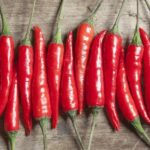By Jeffrey A. Tucker
The American obesity problem is the worst in the world and getting worse all the time. This is widely understood within the public-health establishment. What’s strange is the absence of panic or any real efforts to do anything about it.
In fact, it’s just the opposite. The raid on Amos Miller’s Amish farm and the confiscation of vast amounts of food by government officials reveals that the crackdown is going in the opposite direction, not against corporate farming but against organic and healthy alternatives.
This is extremely strange.
What’s more, our own ill-health is being invoked as a reason why we cannot be free anymore. On Aug. 25, 2020, COVID response coordinator Deborah Birx wrote an internal White House memo that she would have nothing to do with Trump’s new COVID head Scott Atlas because Atlas favored a Sweden-like response. She said that this could never work in the United States because their population is “much healthier.”
In other words, America’s health problems, best illustrated by the obesity problem and the related pandemic of chronic diseases, were often invoked by these people for why we cannot have freedom and rights in this country.
That’s a ridiculous claim in itself. But it does speak to a problem that is tremendously overlooked in mainstream culture. Our health is indeed terrible. There is no doubt that this traces in part to our terrible diet. The lockdowns made matters worse, with some studies showing an average weight gain of 29 pounds during the time when people were stuck at home and gyms and parks were closed.
But what about now? What precisely is wrong with the American diet that keeps bolstering ill-health? We are what we eat, goes the old expression, so what are we eating that is causing this? We would be wise to consider this and stop just stuffing our mouths with what seems convenient, readily available, mega-delicious, and cheap. Fixing this problem requires at least some more eating consciousness.
When I was a kid, all government departments came out with new dietary advice that said grains, breads, oatmeal, cereals, and so on were the foundation of a good diet. At the same time, there was the wide warning against eggs, because they would fill the body with cholesterol, and fat on meat because it had the same name as fat on the body.
Simultaneously, we got new products like margarine made of corn and Cool Whip which is also made of corn. Later we got corn in our gas. Now it is nearly impossible to find a soda at the convenience store that is not packed with corn syrup.
To be sure, back in the 1970s, there were people out there like Robert C. Atkins, a cardiologist who said that this whole theory was wrong. His Atkins Diet was considered heretical and crazy at the time but he was later vindicated.
How did this huge shift to a corn-and-grain-based diet happen? It really began with the Nixon administration and agricultural secretary Earl Butz and his tenure from 1971–1976. He was personally bitter from the New Deal experience from growing up on a farm when FDR had skewed agricultural policy toward restricting production in the name of keeping prices high. His solution was the opposite. He wanted to pay farmers to expand production and compensate them generously for any declines in the price that doing so would cause.
The result was to drive a dramatic expansion of industrial-based farming for soy, corn, and every other grain, as well-heeled corporate moguls purchased as much land as possible and eventually squeezed the family farm out of business. That’s when the trouble began. There needed to be some place or way to use this tremendous surplus that came about.
The federal diet standards came out later in the decade and, big surprise, highly recommended that everyone scarf down as much of this stuff as possible. But that alone was not enough to vacuum up the growing surplus.
Over the decades, there were ever more innovative ways to use corn and soy. This is not the sweet corn you eat but something called field corn that you cannot eat. McDonalds replaced its beef fat for frying with corn oil, and Crisco (made of corn) replaced lard. Other seed oils followed, and meanwhile lard, tallow, olive oil, and butter were out.
As for soybean, it is what it is. Even when I was a young boy, there was an attempt to replace the beef in hamburgers with soy. Even as kids we found them grotesque. No one would eat them and instead the kids all went to the snack machine, but those too were compromised. By that time, the industry discovered they could turn the corn into sugar. It was so cheap because the base product was so plentiful.
To make sure the corn syrup could outcompete sugar, the United States tightened its import quotas on sugar from Mexico and other countries. Today, the U.S. sugar price is twice the international average, pillaging consumers at every turn. This is all structured as a benefit to U.S. sugar producers but also mainly as a subsidy to corn growers.
The other great market for this corn and other grains was as animal feed. This is why cows were removed from pastures and stuck into feedlots, fattened up, and slaughtered in a fraction of time in the past, and thus producing a much less lean product.
Another factor dramatically changing the American diet came from the corporatization of the industry. Massive corporations like Monsanto innovated and patented new seeds that would work in tandem with their own patented fertilizers and weed killers, granting them an all-round monopoly on production and displacing every traditional practice. Yields grew and grew, to the point of absurdity.
It’s for this reason that so many have come to denounce the U.S. food supply as dominated by “frankenfood.” We are unique in the world for this product. While that term is probably an exaggeration, there is no question of the power of big agriculture on U.S. policy. It has profoundly affected everything but especially grains.
After the U.S. invasion of Iraq and during the postwar rebuilding, Order 81 as passed by the Coalition Provisional Authority (CPA) in 2004 seemed to privilege U.S. patented seeds over native ones. “Farmers shall be prohibited from re-using seeds of protected varieties or any variety,” said the act. This became a major factor in causing Iraqis to resist U.S. occupation.
You can enjoy a vast amount of documentaries on Amazon Prime, Netflix, and The Epoch Times on the question of the American diet. You can hear the case for being a vegetarian, a pescatarian, a vegan, a carnivore, or an adherent of keto, paleo, or getting by on powders and smoothies, and so on.
Regardless of where you come down, a single theme keeps emerging. Stop mindlessly buying the pretty packaged stuff at the store. Stop scarfing fast food. Cut it out with the big gulp sodas. Cut out the sugary things. Cook at home. Buy groceries from the outside aisles of the store, meaning fresh fruits and vegetables and quality meats. This seems like a step in the right direction no matter what. If you do this, that will already put you in the 5 percent of eaters and you will surely be on your way to better health.
We know this much. American ill-health has something to do with what we eat, and therefore something to do with the typical American food supply. There is really no doubt about this, which is why new immigrants stay away from mainstream food as much as possible and instead shop at their own stores. This is why they find American food to be disgusting.
I too have sensed something wrong. Every time I travel, from Rome to Tel Aviv to Mexico City, I lose weight and feel better. Nearly everyone reports the same. Consider the implications of this. They are not good.
The problem of U.S. corporatism affects much more than pharma, medical services, media, and tech. It reaches all the way to the food we buy. It’s a major problem. And knowing this now, one does wonder why governments are using their powers to go after the Amish who are trying to offer a healthy alternative.






